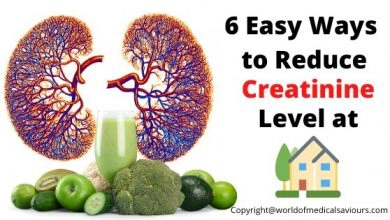
Death and dying an inevitable event
As we are born, we are also destined to die too. Death and dying are inevitable, and we feel so hard to move from it. Death and dying are stressful and hard for a person who is dying. It takes a great troll to their loved ones and caretakers as well. Let’s know about dying definition, stages of death and accepting death and more.
In topic, death and dying let’s start with planning for dying. There have been dramatic improvements in the medical treatment and care of patients with cancer and other illnesses over recent years. Still, the inescapable fact remains that everyone will die at some time. Planning for death should be actively considered in patients with chronic diseases when death is considered to be foreseeable or inevitable.
Doctors rarely know precisely when a patient will die but are usually aware that an individual is about to die and that medical interventions are unlikely to extend life or improve its quality significantly. Most people wish their doctors to be honest about this situation to allow them time to think ahead, make plans and address practical issues.
A few do not wish to discuss future deterioration or death; if this is the case, avoidance of discussion is done. For doctors, it is helpful to understand an individual’s wishes and values about medical interventions at this time, as this can help guide decisions about interventions.
It is essential to distinguish between interventions that will not provide clinical benefit (a medical decision) and those that do not confer sufficient benefit to be worthwhile (a conclusion that can only be reached with a patient’s involvement and consent). A typical example of this would be decisions about not attempting cardiopulmonary resuscitation.
In general, people wish for a dignified and peaceful death, and most prefer to die at home. Families also are grateful for the chance to prepare themselves for the end of a relative, by a timely and gentle discussion with the doctor or other health professionals. Early analysis and effective planning improve the chances that an individual’s wishes will be achieved.
There are two important caveats: firstly, wishes can and do change as the terminal situation evolves, and secondly, planning, in general, can only be done over time as patients form a relationship with professionals and evolve an understanding of the situation in which they find themselves.
Structures for assessment and planning around end-of-life care are for guidance only, and the focus should evolve with the individual patient. Let’s know first about what is dying through dying definition.
Dying definition:
What does dying means? let’s try to know through dying definition. Dying is the point when someone is on their verge to death. It simply means someone is near to their end. I think you know what is dying through the dying definition.
Diagnosing dying
When patients with cancer or other conditions become bed-bound, semi-comatose, unable to take tablets and only able to take sips of water, with no reversible cause, they are likely to be dying, and many will have died within two days. Doctors are sometimes poor at recognising this and should be alert to the views of other members of the multidisciplinary team. A clear decision that the patient is dying should be agreed and recorded.
Management of dying
Once the conclusion has been reached that a patient is going to die in days to a few weeks. There is a significant shift in management. Symptom control, relief of distress and care for the family, become the most important elements of care. Medication and investigation are justifiable only if they contribute to these ends.
When patients can no longer drink because they are dying, intravenous fluids are usually not necessary and may cause worsening of bronchial secretions; however, this is a decision that can be made only on an individual basis. Management should not be changed without discussion with the patient or family. Medicines should always be prescribed for the relief of symptoms.
For example, morphine or diamorphine may be used to control pain, levomepromazine to control nausea. Haloperidol to treat delirium, diazepam or midazolam to manage distress, and hyoscine hydrobromide to reduce respiratory secretions. Side-effects, such as drowsiness, may be acceptable if the principal aim of relieving suffering is achieved.
It is essential to discuss and agree on the aims of care with the patient’s family. Poor communication with families at this time is one of the most common reasons for family distress afterwards and for formal complaints.
Ethical considerations
The overwhelming force in caring for any patient must be to listen to that patient and family and take their wishes on board. Patients know when health-care professionals are just receiving the information, as opposed to receiving and understanding the information in the context of the patient, their illness and needs, their carers and the socioeconomic background.
It is impossible to provide holistic care for a patient without this comprehension. Every patient is unique, and it is essential to avoid slipping into a tick-box mentality in addressing items that should be covered in patients with an advanced, incurable disease. While the key to successful palliative care is useful interdisciplinary working, every patient needs to know who has overall responsibility.
How to manage a patient who is dying?
Patient and family awareness
- Assess patient’s and family’s awareness of the situation
- Ensure the family understands the plan of care
Medical interventions
- Stop non-essential medications that do not contribute to symptom control
- Stop inappropriate investigations and interventions, including routine observations
Resuscitation
- Complete Do Not Attempt Cardiopulmonary Resuscitation (DNACPR) form
- Deactivate implantable defibrillator
Symptom control
- Ensure the connection of parenteral medication for symptom allayment
Support for family
- Make sure you have contact details for family, that you know when
they want to be contacted and that they are aware of facilities available to them
Religious and spiritual needs
- Make sure any particular wishes are identified and followed
Ongoing assessment
- Family’s awareness of the condition
- Management of symptoms
- Need for parenteral hydration
Care after death
- Make sure family know what they have to do
- Notify other appropriate health professionals
for their care. Trust in the whole team will come through a solid lead working with a team who are appropriately informed and in sympathy with the patient’s situation, each having a clear role.
Families and other carers are often unprepared for the challenge of caring for a dying person. It can be an exhausting experience both emotionally and physically, and without a critical number of carers, battle fatigue can ensue, resulting in urgent admissions.
With much discussion about advance directives, we should not lose sight of the reality of changing circumstances and wishes. Good anticipatory care means not just providing for new physical symptoms, but also planning for any time when care at home becomes no longer possible. How to manage a dying patient is also an essential part of “death and dying.”
Capacity and advance directives
The wishes of the patient are paramount in Western societies, whereas in other cultures, the views of the family are equally important. If a patient is unable to express their opinion because of communication or cognitive impairment, that person is said to lack’ capacity’.
To decide what the patient would have wished, as much information as possible should be gained about any previously expressed wishes, along with the views of relatives and other health professionals. An advance directive is a previously recorded, written document of a patient’s wishes.
It should carry the same weight in decision- making as a patient’s expressed wishes at that time. Still, it may not be sufficiently specific to be used in a particular clinical situation. The legal framework for decision making varies in different countries.
Euthanasia
In the UK and Europe, between 3% and 6% of dying patients will ask a doctor to end their life. Many of these requests are transient; some are associated with poor control of physical symptoms or a depressive illness. All expressions of a wish to die are an opportunity to help the patient discuss and address unresolved issues and problems.
Reversible causes, such as pain or depression, should be treated. Sometimes, patients may choose to discontinue life-prolonging treatments, such as diuretics or anticoagulation, following discussion and the provision of adequate alternative symptom control. However, there remain a small number of patients who have a sustained, competent wish to end their lives, despite reasonable control of physical symptoms.
Euthanasia is now permitted or legal under certain circumstances in some countries but remains illegal in many others; public, ethical and legal debate over this issue is likely to continue and is often influenced by many complex non-palliative care issues. The European Association for Palliative Care does not see euthanasia or physician-assisted suicide as part of the role of palliative care physicians.
Stages of dying:
Dying is not easy to accept. But due to chronic illness and severe conditions like cancer, even we search for best health options we still are unable to survive. There are different stages of dying. So, here are the five most talked stages of dying.
- Denial
- Anger
- Bargaining
- Depression
- Acceptance
So, after these stages of dying at last people accept their death which is very hard. The stages of the dying processes gradually, but it depends on the individual itself too. So. I think you have some idea about the stages of dying.
Accepting death:
Death is not natural to accept, although it is a better truth. Accepting death is very hard. Accepting death is hard for the one who is dying as well; it is hard for their loved ones as well. Taking death becomes the only option for a patient if the disease cannot be treated further, or there is no chance of health improvement.
Takeaway:
Doctors rarely know precisely when a patient will die but are usually aware that an individual is about to die and that medical interventions are unlikely to extend life or improve its quality significantly. Most people wish their doctors to be honest about this situation to allow them time to think ahead, make plans and address practical issues. Dying definition described what dying is, and it is necessary to know about dying definition.
Do read: Care for ageing parents.




